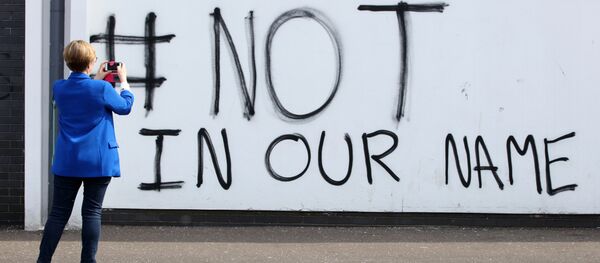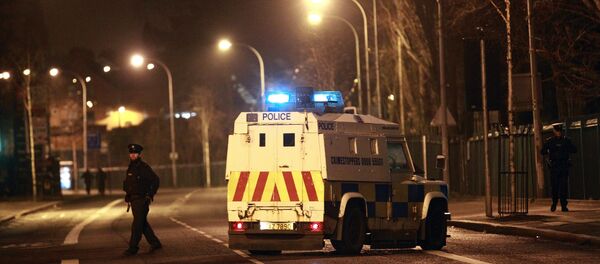Four main groups were behind the rising; The Irish Republican Brotherhood (IRB), which was formed in the mid-19th century, led by Thomas Clarke and Seán Mac Diarmada; The Irish Volunteers, a military group formed in 1913, whose members accounted for the largest number of men who participated in the Easter Monday uprising; The ‘League of Women’, which organised over 200 of its members to take part; And the Irish Citizen Army (ICA), a socialist militia, formed by James Connolly during the bitter Dock strike of 1913 in Dublin.
The Irish rebellion of Easter 1916 would send ripples of encouragement to defy and rebel to colonised peoples across the world. James Connolly’s great achievement was to articulate and explain the necessary interspersing of the struggle for national freedoms with the struggle for socialism. His experience of working class organisation and struggles against the boss class in Britain, America and Ireland linked to his avid reading of the history of the world as articulated by Marx and Engels taught him that national freedom was a prerequisite to the advance of socialism and that both struggles were inseparable from each other.
READ MORE: UK Police Probe 'Irish Dissident' Plot After Three Parcel Bombs Found in London
The overarching event which explains the timing of the Easter Uprising was the First World War. In pursuit of more profits through economic market dominance Britain was demanding the blood and sacrifice of its young male subjects on the muddy grounds in Flanders Fields which soon became caked with the blood and guts of young men conscripted into army uniforms. On either side of the trenches stood working class pawns in a ruling class game of war for greater control and influence over the world’s wealth and riches. The sacrificial lambs to the slaughter on those battlefields were fighting for the interests of the rich and powerful not their own class.
To Connolly the First World War was not a just cause but a disaster for workers across the world ordered to kill one and other on behalf of the bosses. As he himself said;
"If these men must die, would it not be better to die in their own country fighting for freedom for their class, and for the abolition of war, than go forth to strange countries and die slaughtering and being slaughtered by their brothers that tyrants and profiteers might live?"
He also highlighted the hypocrisy of young men in Ireland being enlisted to fight for freedoms in other countries which were denied to them in Ireland;
“For generations the shamrock was banned as a national emblem of Ireland, but in her extremity England uses the shamrock as a means for exciting in foolish Irishmen loyalty to England. For centuries the green flag of Ireland was a thing accurst and hated by the English garrison in Ireland, as it is still in their inmost hearts. But in India, in Egypt, in Flanders, in Gallipoli, the green flag is used by our rulers to encourage Irish soldiers of England to give up their lives for the power that denies their country the right of nationhood. Green flags wave over recruiting offices in Ireland and England as a bait to lure on poor fools to dishonourable deaths in England’s uniform” (From ‘The Irish Flag’, James Connolly, April 8th, 1916).
The words above appeared in a journal established by Connolly to agitate for a free Ireland and a socialist Ireland, the ‘Workers’ Republic’. Its very name embodied the revolutionary and democratic idea of a republic as opposed to the Monarchy which was head of state in Britain.
Connolly was born into the slum conditions which prevailed in Edinburgh’s Cowgate in June 1868. His mother Mary died as a result of the deprivation they suffered while Connolly was only a young boy. He attended school until he was 10 years of age but was then compelled to work for a newspaper firm cleaning the rollers of dried ink for each day’s production. It was hard and dirty work but the family desperately needed the income.
In one of life’s rich ironies Connolly left the newspaper firm aged 14 to join the British army. He served in it for seven years and was posted to Ireland, mainly around the area of Cork. There he witnessed ill-treatment of the Irish but not just by the army. He also saw how cruel and brutal Irish landlords were against the poor and developed a hatred of them which stuck with him throughout his life.
So James Connolly, the man at the heart of the rebellion against the British army in Ireland, actually first set foot in Ireland dressed in a British army uniform. He joined the army as a 14 year old boy but left as a 21 year old man thirsty for knowledge and determined to fight for justice and emancipation for the working classes. After getting married in Edinburgh and moving between Scotland, Ireland and America performing socialist and trade union organiser jobs he returned to Dublin in 1910 to become the Belfast organiser of the Irish Transport and General Workers union.
READ MORE: Soros Gave Money to Irish Civil Liberties Group — Reports
James Connolly’s life is fascinating and worthy of more detailed study but for the purpose of this column he supplies the Scottish link to the Easter rebellion of 1916. He and the other Irish socialists and nationalists who participated in the rebellion united in the cause of Ireland’s freedom and the Proclamation of the Irish Republic which was read on April 24th 1916 outside the Dublin GPO Office which became the HQ of the rebellion was a visionary and progressive statement with Connolly’s influence evident;
“The Irish Republic is entitled to, and hereby claims, the allegiance of every Irishman and Irishwoman. The Republic guarantees religious and civil liberty, equal rights and equal opportunities to all its citizens, and declares its resolve to pursue the happiness and prosperity of the whole nation and of all its parts, cherishing all the children of the nation equally, and oblivious of the differences carefully fostered by an alien Government, which have divided a minority from the majority in the past.
Until our arms have brought the opportune moment for the establishment of a permanent National Government, representative of the whole people of Ireland and elected by the suffrages of all her men and women, the Provisional Government, hereby constituted, will administer the civil and military affairs of the Republic in trust for the people”.
The above two paragraphs from the six paragraph Proclamation declare for universal suffrage at a time when women were denied the vote and only certain categories of men were entitled to it. There was to be no unelected Monarchy but a democratically elected republic. Such a statement was revolutionary and ahead of its time in historical terms. All seven signatories participated in the rebellion. I encourage you to read it in full and be inspired.
The next day Pádraig Pearse, the acting President of the provincial government, surrendered unconditionally on behalf of the Volunteers and issued orders to this effect.
A total of 450 people were killed during the rebellion, among them 64 rebels. 2,614 were injured, and nine others were reported missing, almost all in Dublin. The rebel leaders who survived would soon be killed by the British state. The men were tried in secrecy at Richmond Barracks in Dublin at a series of field general courts-martial where they were permitted no defence counsel.
The executions began on the morning of 3 May with Pádraig Pearse, Thomas Clarke and Thomas MacDonagh being shot by firing squad at the Stonebreaker’s Yard in Kilmainham Gaol. The following morning Joseph Plunkett, Edward Daly, Michael O'Hanrahan and Willie Pearse were shot, followed by John MacBride on the morning after.
READ MORE: UK Soldier Faces Prosecution for Bloody Sunday Killings in N Ireland in 1972
Éamonn Ceannt, Michael Mallin, Seán Heuston and Con Colbert were shot on 8 May, followed by Seán Mac Diarmada and James Connolly on 12 May.
Connolly had been badly injured and was being treated for bullet wounds to his legs in the Red Cross hospital which had been set up in Dublin Castle. He could not walk or stand. He was carried on a stretcher to Kilmainham Gaol where he was tied to a chair and executed.
The state murder of Connolly and all the rebel survivors caused outrage across Ireland and although the rebellion was defeated the spirit of freedom it inspired in the hearts of Irish citizens led to the demise of those who advocated meek Westminster permission for independence and led to the formation of a new Sinn Fein party committed to breaking entirely with Westminster.
The defeated Easter Uprising in April 1916 had ushered in the spirit and desire for the new revolutionary republic which was declared in December 1919. So the independent state of Ireland was born and James Connolly and the Easter Uprising rebels were midwifes of that new free state. It is an event which should inspire freedom fighters and socialists across the globe.
The whole of Ireland may not yet be free but the desire for Irish unification and independence from Britain grows stronger. We in Scotland should be proud of our son James Connolly and the values of national freedom and social justice he stood for and fought for all his life. The song ‘Freedom Fighter’ by Edinburgh singer songwriter Kevin Gore pays proud tribute to Connolly’s memory.








